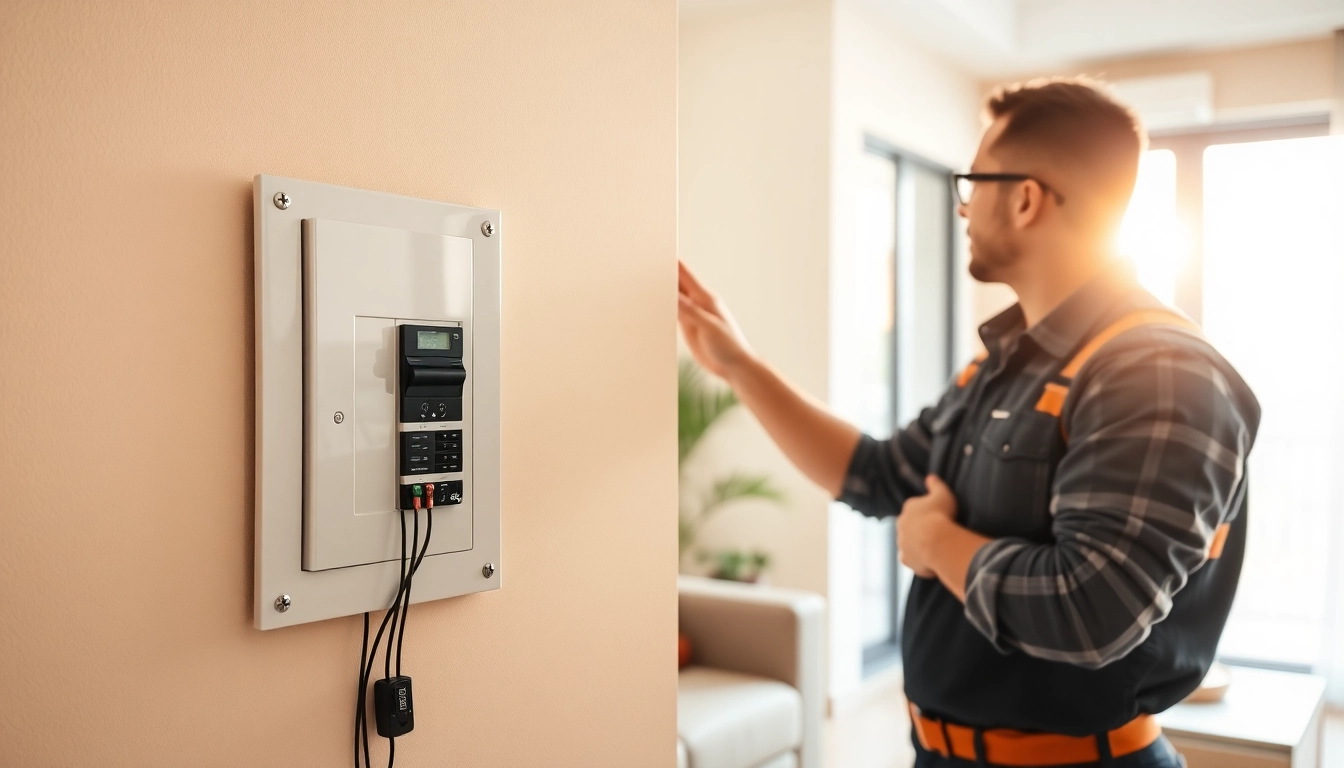Introduction to Electrical Panel
The Electrical Panel serves as the control center of your home’s electrical system. It manages the electricity that flows into your house and distributes it to various circuits, allowing you to operate lights, appliances, and all your electrical devices safely and efficiently. Understanding the functionality, importance, and maintenance of your electrical panel is essential for ensuring safety and performance in your home environment.
What is an Electrical Panel?
An electrical panel, also known as a breaker box or distribution board, is a crucial component of an electrical system that collects and distributes electrical power to different circuits throughout a building. It typically contains a series of circuit breakers, which act as safety devices that interrupt the flow of electricity in case of an overload or short circuit. These panels can vary in complexity and size, depending on the electrical load requirements of a home.
Importance of Electrical Panel in Home Safety
The electrical panel is central to the safety and functionality of your home’s electrical system. It prevents potential dangers like electrical fires and electrocution by ensuring that the electrical load on each circuit is balanced and that overloads lead to the immediate disconnection of power. Regular maintenance and timely upgrades to your electrical panel can significantly reduce risks associated with outdated systems.
How Electrical Panel Works
The operation of an electrical panel can be broken down into a few essential functions:
- Power Distribution: The panel receives electricity from the utility company, distributing it to various circuits throughout the home.
- Load Management: Each circuit is protected by a circuit breaker that cuts off electricity flow in case of overload or a fault.
- Monitoring and Maintenance: Many modern panels include smart features for monitoring electrical usage, offering insights into energy consumption and aiding in proactive maintenance.
Signs You Need to Upgrade Your Electrical Panel
Recognizing the signs that your electrical panel needs an upgrade is paramount in safeguarding your home’s electrical system. Several indicators can help determine when it’s time for a change.
Frequent Circuit Breaker Trips
One of the most common signs of an overloaded or malfunctioning electrical panel is frequent circuit breaker trips. If you find yourself resetting circuit breakers constantly, it is a sign that your panel may not be able to handle the electrical load of your home.
Increased Power Demand
As technology evolves, so does our dependence on electronic devices. An increase in the number and type of appliances can demand more power than your current electrical panel can provide. New devices, such as smart home systems or energy-intensive equipment, may require an updated panel to support their operation.
Age of Your Electrical Panel
If your electric panel is over 20 years old, you may need to consider an upgrade. Older panels may not only lack modern safety features but can also struggle to support the electrical demands of contemporary households.
Types of Electrical Panels Available
Different types of electrical panels are designed for unique applications. Understanding these options can assist you in selecting the most suitable panel for your home’s needs.
Differences Between Fuse Boxes and Electrical Panels
Fuse boxes were once a common method for managing electrical systems but have largely been replaced by circuit breaker panels. Unlike fuse boxes that require replacement when blown, circuit breaker panels offer greater convenience with reset capabilities, making them safer and more efficient.
Common Types of Electrical Panels
Three common types of electrical panels are:
- Main Breaker Panel: This panel controls the electrical supply to the entire house and can shut off power for maintenance.
- Subpanels: Used in larger homes or buildings, subpanels serve specific areas, providing localized control of circuits.
- Smart Panels: Equipped with technology for monitoring and controlling electrical consumption, these panels offer insights for energy efficiency.
Choosing the Right Electrical Panel for Your Needs
When selecting an electrical panel, consider factors such as the total electrical load, the number of circuits required, and any additional features like surge protection. Consulting with a professional electrician can aid in making the best decision tailored to your specific needs.
The Electrical Panel Upgrade Process
Upgrading your electrical panel can seem daunting, but understanding the process can facilitate smooth implementation. Below are steps to guide you through the upgrade process.
Steps to Prepare for an Upgrade
Before starting the upgrade process, it’s crucial to evaluate your current electrical system thoroughly. Counting the existing circuits, determining the total load, and noting any problems with your current panel can help guide the upgrade process effectively.
Hiring a Qualified Electrician
Choosing a qualified and licensed electrician is pivotal. Look for professionals who have experience with panel upgrades, as they can identify potential issues and ensure compliance with local codes.
What to Expect During the Upgrade
The actual upgrade process usually involves the following steps:
- Shutting down power to the existing panel, ensuring safety during the upgrade.
- Removing the old panel and replacing it with the new one, which involves careful wiring and connection to ensure proper function.
- Testing the new system and verifying that all circuits are functioning correctly before restoring power.
Cost Considerations for Upgrading Electrical Panel
Understanding the financial aspects associated with upgrading your electrical panel will help with budgeting and expectations. Various factors can influence the overall cost of the upgrade.
Factors Influencing the Cost
Several factors contribute to the overall cost of an electrical panel upgrade, including:
- The type of panel you choose (e.g., standard vs. smart panel).
- The complexity of the installation, including any additional circuit installations.
- Labor costs, which can vary by location.
Average Costs Breakdown
While costs can vary, homeowners should expect to spend between $1,200 and $3,000 on average for a complete electrical panel upgrade. This includes both the panel and installation labor.
Long-term Benefits of Upgrading Your Electrical Panel
Investing in an upgraded electrical panel offers numerous long-term benefits, including:
- Improved Safety: Modern panels have more safety features and better circuit protection.
- Increased Electrical Capacity: An upgraded panel can accommodate more circuits, offering flexibility for future expansions.
- Enhanced Home Value: Homes with updated electrical systems are more attractive to potential buyers, helping preserve property value.



